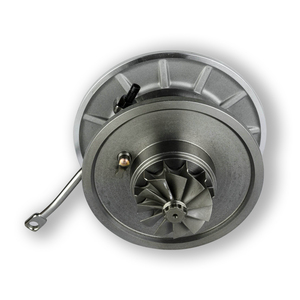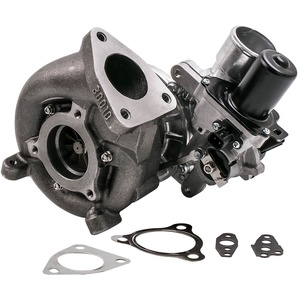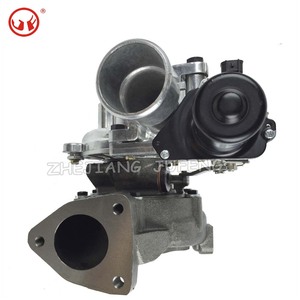(1396 products available)




























































































































































































The Toyota 1KD-FTV engine is a 3.0-liter inline 4-cylinder turbo-diesel engine commonly found in various Toyota vehicles, such as the Hilux, Land Cruiser, and Fortuner. The CT16 turbo is a variable geometry turbocharger designed to improve engine performance by increasing airflow and boosting power output. This turbocharger allows the 1KD-FTV engine to generate more power and torque, making it suitable for heavy-load applications and off-road driving. Vehicles with the 1KD-FTV engine and CT16 turbocharger can deliver better acceleration, towing capacity, and overall driving performance.
Some common types of CT16 turbochargers include:
Various factors help determine the specification of a CT16V Turbo.
Engine displacement
It is the total volume of all the cylinders in an engine. It is measured in liters or cc (cubic centimeters). Larger engines can inhale more air and require larger turbochargers to match the airflow demands. The ct16v turbo is compatible with 2.0-liter and 2.8-liter engines.
Turbocharger design
Turbochargers have different designs depending on the application. They have varying compressor and turbine wheel sizes that affect airflow and boost pressure. The ct16v turbo has a standard design that suits most vehicles.
Vehicle weight
Vehicle specification also affects the ct16v turbo performance. Heavier vehicles require more power from the engine to maintain speed. They may need a larger turbocharger to generate sufficient power.
Altitude
At high altitudes, the air density is low, which affects engine performance. At high altitudes, the turbocharger has to work harder to compensate for the lower air density. This requires a larger turbocharger for effective power generation.
Fuel type
Different fuel types have varying octane ratings. Higher-octane fuels allow for more aggressive tuning and better performance with turbocharged engines. The ct16v turbo works better with premium gasoline.
Maintaining a CT16V turbo is important for ensuring long-lasting durability and optimal performance. Here are some tips for maintaining the turbo:
It's crucial to select the proper CT16 turbocharger when upgrading a car's engine. A suitable turbocharger will improve engine performance and fuel efficiency; however, a mismatched one will cause several problems, including poor engine performance.
Here are some tips for selecting the ideal CT16 turbocharger:
Understand the vehicle's needs
The first step in selecting the proper turbocharger is understanding the vehicle's needs. Consider factors such as the car's weight, engine type, and driving habits. A heavier car will require a larger turbocharger for adequate power delivery. Similarly, a larger turbocharged may be needed for a well-tuned engine.
Consider the power goals
What is the desired horsepower for the vehicle? Choosing a turbocharger that will produce the desired horsepower without going overboard is essential. A too-large CT16 turbo will cause the engine to lag and result in a waste of power.
Research the different CT16 turbo variants
Different variants of the CT16 turbo exist, and each has unique features. It is important to research the various options and select the one that best fits the vehicle's needs. For example, some CT16 turbochargers are designed for low-end torque, while others focus on high-end power delivery.
Consult with a professional
If unsure about which turbocharger to choose, it is advisable to consult with a professional. Mechanics specializing in turbo upgrades can help select the proper turbocharger after analyzing the vehicle.
Check the warranty and support
When selecting a CT16 turbo for resale, checking the warranty and support is crucial. A good warranty will protect the investment in case of any defects. Moreover, selecting a turbocharger from a reputable manufacturer ensures adequate support in case of any issues.
It's crucial to follow the steps provided by the manufacturer when replacing a CT16V turbo. Below are some generic steps for replacing a turbocharger:
Q1: What does CT16V mean?
A1: CT16V is a turbo commonly used in many modern 2.0 diesel and 2.8 petrol engines. It's a turbo upgrade that allows the engine to draw more air, resulting in more power. The CT16V turbo is a turbo of choice for many people looking to upgrade their engines and gain more power.
Q2: What is the difference between CT16 and CT16 turbo?
A2: There is no significant difference between CT16 and CT16 turbofications. CT16 is the more common name, while CT16 turbo is just a reference to the turbo itself.
Q3: What are the benefits of upgrading a turbo to CT16?
A3: Upgrading to a CT16 turbo can improve the performance of an engine by 50% to 70%. The turbo allows the engine to draw more air, which means the engine can generate more power. This is particularly useful for drivers who want to improve the performance of their vehicles.
Q4: Is the CT16 turbo good?
A4: The CT16 turbo is one of the most popular turbos for engine upgrades. It offers a good balance between performance and reliability, making it a suitable choice for many people looking to upgrade their engines.